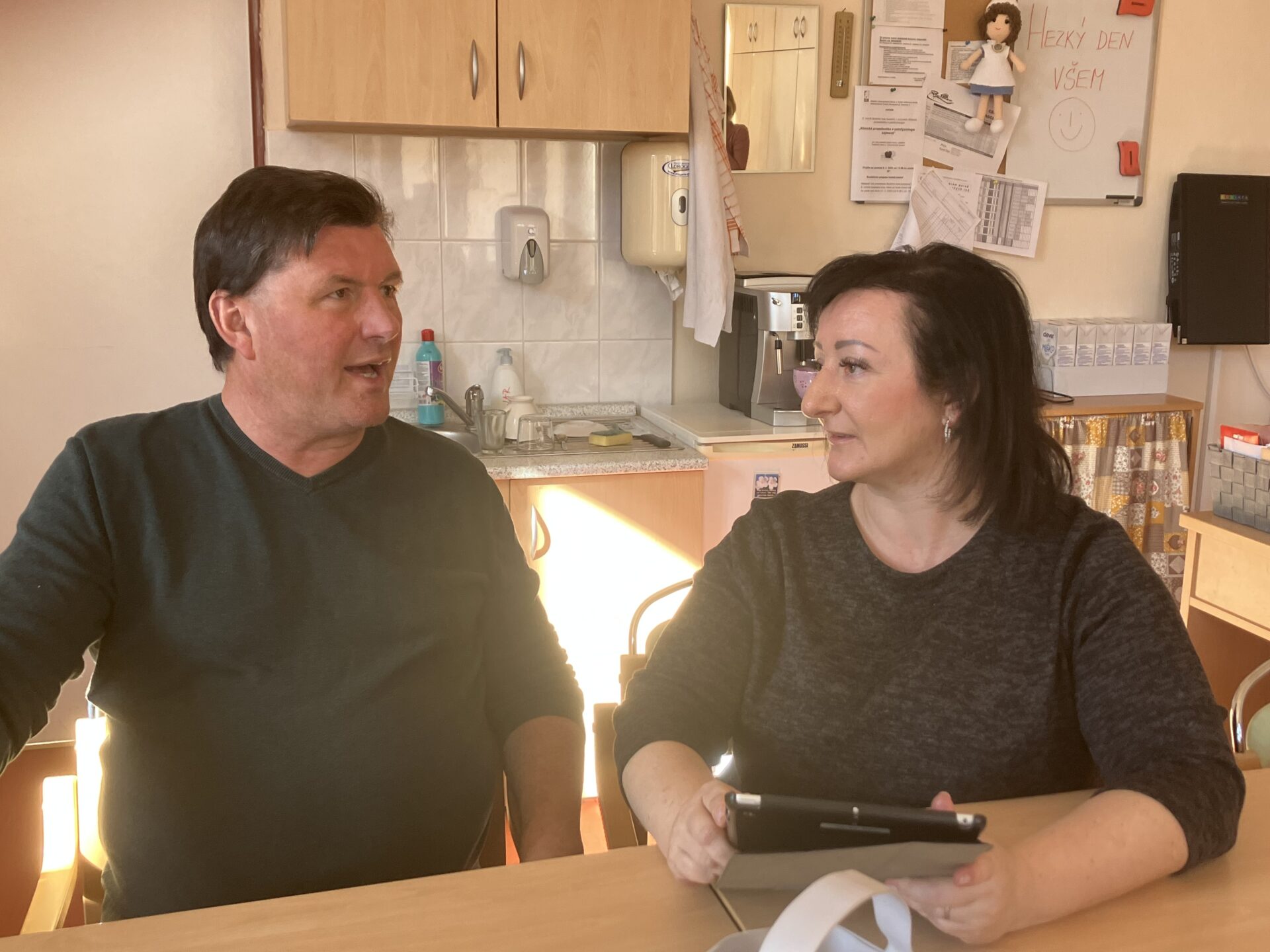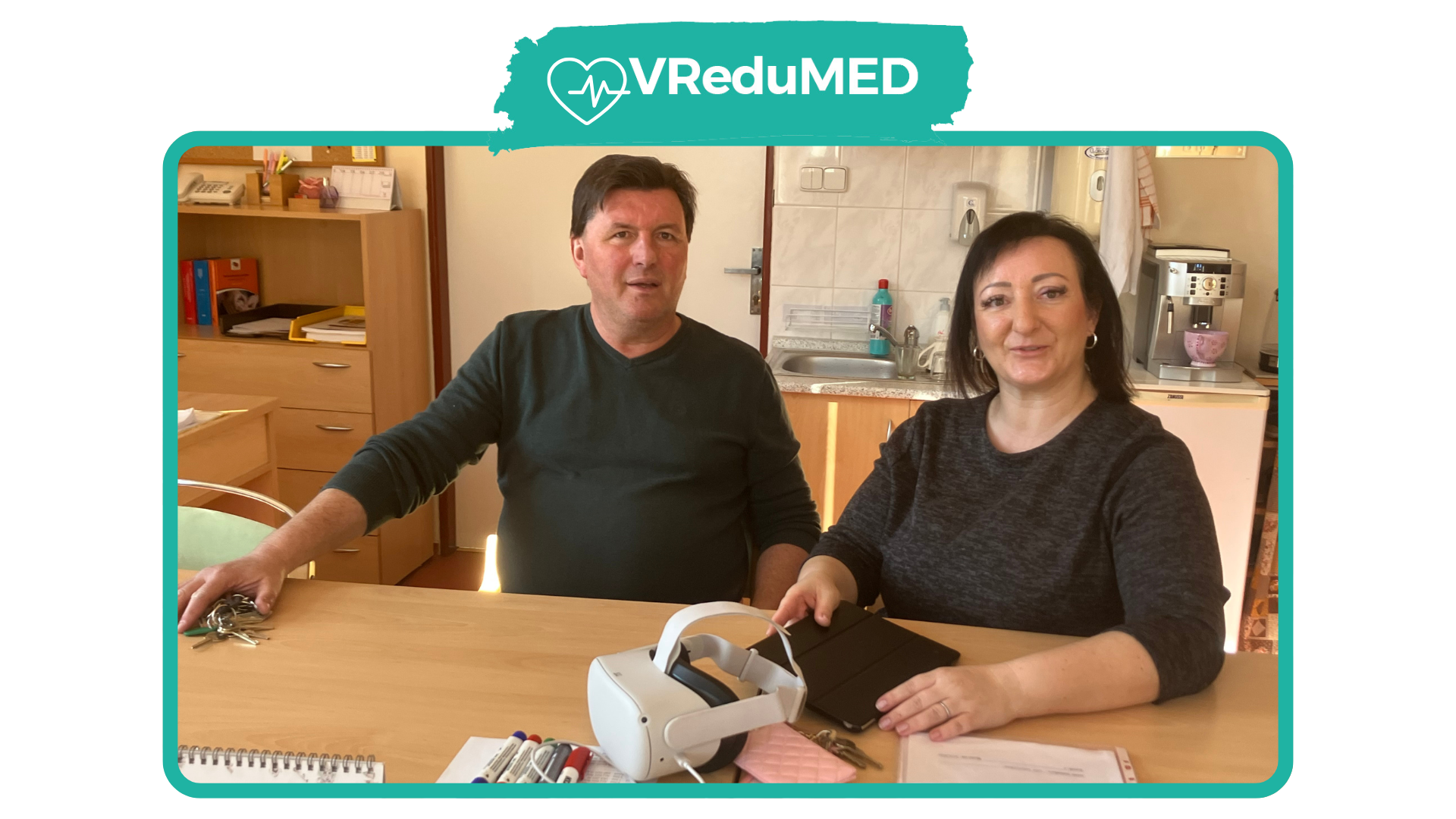In the Czech Republic, there is a variety of pathways to establish a professional career in the fields of healthcare and social services. Numerous options for vocational training, advanced education, and degree programs provide opportunities to meet the diverse demands of these professions. Depending on the area of specialization and level of responsibility, educational programs vary in scope, qualifications, and entry requirements. To bring clarity to this broad spectrum of opportunities, some key areas of training and education have been structured and summarized in in this compact summary.
Today’s challenges in nursing and nursing education
According to Director Karel Stix, the biggest challenges in education are the lower motivation and shorter attention spans of today’s students. For teachers, it’s challenging to integrate current trends and new developments into their teaching. This requires ongoing training.
In the field of nursing, Director Stix views the staff shortage as the biggest issue, driven by the rapid decline in nursing staff due to retirements, as well as burnout and stress resulting from the increased demands placed on the staff. The negative consequences of this fulfilling but demanding work on the physical and mental health of nurses are becoming increasingly clear (insomnia, depression, anxiety, psychosomatic disorders, chronic fatigue syndrome, etc.).
The next generation of nurses expects greater well-being in the workplace and appropriate compensation for the heavy workload. They prefer more part-time work models and reject shift work and overtime, even if this would mean more money.
If nursing staff from Ukraine, for example, are employed, language is one of the biggest obstacles, as well as the differences in skills and procedures.
VR integration in education: current use and future potential
In a conversation with Babora Sedlackova, headmaster Karel Stix explains that VR is already being used in some subjects: For example, VR apps are a particularly good support for anatomy lessons. First aid teaching is being supported by the CPR app by Virtual Labs.
Based on these experiences, Director Stix envisions the use of VR in various areas, ranging from training technical skills like operating devices to method training, as well as social skills and communication: Here, Stix emphasizes that he sees this as an important topic for training challenging conversations with patients, relatives and bereaved families.
Stix sees a great deal of benefit in using VR to train procedures and life-threatening situations such as resuscitation; virtual tours of specialized workplaces such as hemodialysis or operating rooms could also enrich the lessons.
Simulations in which students can “step into the skin of a patient,” such as those simulating dementia, hearing, speech, or visual impairments, are of interest to Stix because they provide students with a realistic experience and can better prepare them for dealing with these patients.
VR teaching requires a certain level of technical expertise from teachers, and teachers are concerned about technical difficulties that may arise during VR instruction. Some schools also struggle to fund the necessary technologies.
For Director Stix, a VR lab seems to be the ideal solution, as the technical equipment is already prepared and ready to use. He also highlights the practicality of being able to stream the glasses’ screen to other students, which is very useful for teaching.
Another challenge for using VR in teaching is that many of the apps are not available in Czech. According to Director Stix, language selection and automatic evaluation of results are particularly important, and support for handheld control is considered a bonus. The option offered by some apps to save results is rarely utilized by the school.
Engagement through immersion: the advantage of VR in nursing education
Based on the school’s experience, scenarios for the use of VR in teaching should ideally not last longer than 5 minutes. Stix also points out that VR-based teaching also requires more time-consuming preparation to ensure effective learning. However, getting used to using the technology regularly saves time in the long run and leads to more effective learning.
From the students’ point of view, VR teaching is undoubtedly more engaging than traditional classroom teaching; they can easily immerse themselves in simulated simulations and play through scenarios.
For Stix, the ideal example of a valuable VR training tool for nursing education would be an app operated by hand tracking that simulates a complex, everyday situation. This would involve a nurse caring for two patients in the intensive care unit, fulfilling various orders from doctors, while simultaneously responding to patient reactions and managing distractions like a ringing phone or malfunctioning machines.
Further Information: Střední zdravotnická škola a Vyšší odborná škola zdravotnická, České Budějovice
© JU Budweis
Director Karel Stix interviewed by Babora Sedlackova from the University of Budweis

